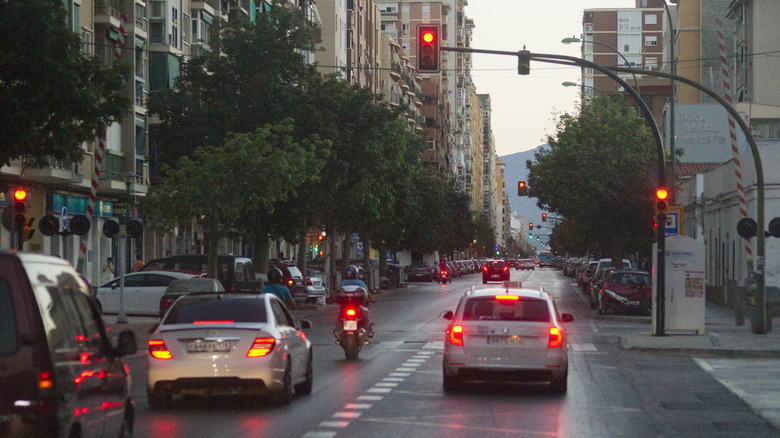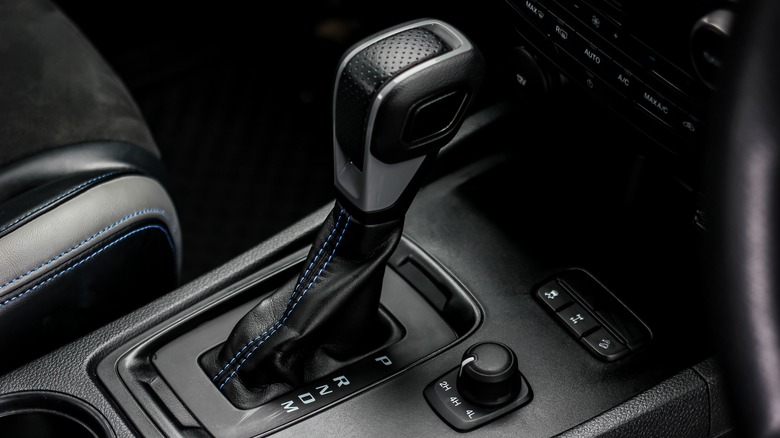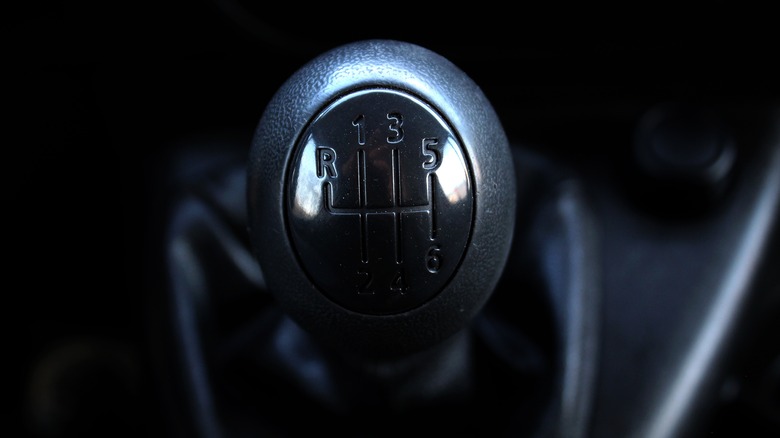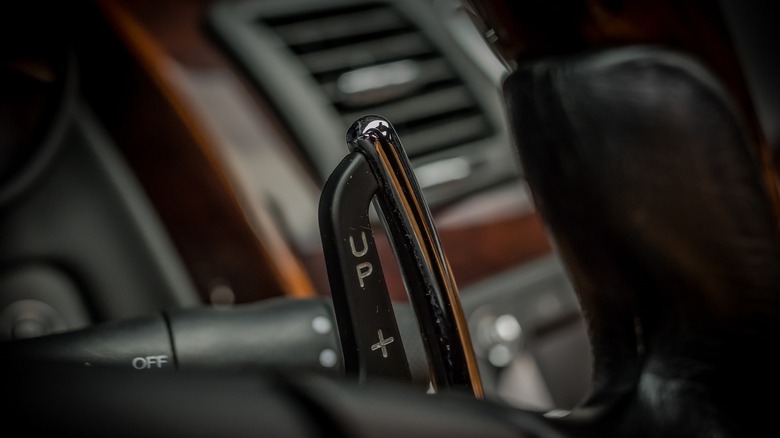Should You Shift To Neutral At Red Lights?
Driving isn't complicated when you get used to it, and most people are capable of getting the basics down. But when you dig into the finite act, there are many little parts of everyday driving where people may not know exactly what to do. Dropping it in neutral when you hit a stoplight is one of those things, and could even be a point of debate.
A definitive answer depends on what you're driving. Things are different in vehicles with an automatic transmission compared to a manual gearbox. There are certain transmissions that won't give you a choice but may put you in a situation you have to mitigate. Here's a breakdown of what to do in vehicles with three of the most common transmission types, as well as the reasons why you should be doing things that way.
However, whatever your transmission choice, your car in drive isn't really an ideal option. Pressing on the brake will cause a small amount of wear on your legs, which may be irritating depending on your level of physical fitness. There's also a good chance it will cause wear on the clutch or other transmission components. Transmission replacements and rebuilds are labor intensive and expensive. In some vehicles, the parts can cost a lot too. In many cases, scrapping an older vehicle is the cheap and sensible option when the transmission fails, so it's really something you want to take care of. Avoiding even very minor wear can make a huge difference over several years.
In terms of experience, the author learned to drive in (and spent his formative years driving) cars with manual transmissions. Over the last few years he's mainly driven automatics, but he's also dabbled with various other transmission options during his time as an automotive journalist.
Avoid neutral if you drive an automatic
If you're in an automatic, then putting it in neutral at a stoplight is a bad idea. If you don't want to keep your foot on the brake, then slip it into park. Unless something is very wrong with your transmission, putting it in park should hold the vehicle in place if the piece of road you're on has any kind of gradient.
Conversely, putting it in neutral completely disconnects the engine from the transmission and gives the vehicle the ability to roll. If there's any kind of hill, your vehicle could roll down, hit a person, another vehicle, or some other obstacle. If you were to put an automatic in neutral, you'd either have to keep your foot on the brake, or apply the parking brake until you're ready to go. Parking brakes can be hard to find on many modern automatics, so all of this is a tremendous waste of time
There is an argument that leaving a vehicle in drive at a stoplight will cause unnecessary wear on a lot of transmission systems. But again, putting it in park is an easy way to solve this problem. Give your foot a rest, avoid causing an accident, and drop your automatic into park if you hit a red.
If you're wondering why your automatic even has "neutral," it still has a very important job. If you're in a situation where the vehicle needs to be towed or pushed for any length of time, you'll have to put it into neutral before that happens. If it's in any other setting, you'll be fighting against the engine when trying to move the vehicle, which will make the job harder and could potentially damage the vehicle.
Things are a little different with a manual transmission
If you're at a stoplight and your vehicle is fitted with a manual transmission, neutral is your friend for a number of reasons. First, it will save a little strain on both of your legs. If you're in gear, in a manual, and you don't want the vehicle to move, you need to depress the clutch. This separates the transmission from the engine and stops any power making it to the wheels. What this means at a stop light is you may end up with your left foot pressing the clutch, and right pressing the brake. This makes accelerating away a little trickier, and can be a bit tiring.
Keeping the clutch depressed unnecessarily is a good way to wear out a tricky to replace part faster than you have to. You'll also need your right foot free should you be on any kind of gradient, as hillstarts can require a good amount of revs if you want to avoid stalling.
So what's the solution? The parking brake is very much your friend in an automatic, so you definitely should keep it in good condition and not wear it out trying to send your Subaru sideways at every opportunity. When you're at a stop light, dip the clutch, apply the parking brake immediately, then slip the vehicle into neutral. This should hold the car in place and avoid wear on the clutch. It will also allow you to find the biting point easily with a foot on the accelerator before you take off again.
What about a dual-clutch transmission?
A dual-clutch transmission (DCT) is the best of both worlds in many ways. It will shift itself like an automatic if you want it to, and carry out that task with high precision. That is why you normally see dual clutch or semi-auto transmissions in high-end performance cars. You also have the option to shift manually, usually via a pair of paddle shifters, should you want to get more involved. When in automatic mode, the transmission selects what gear it thinks is best for the situation. This includes no gear at all (or "neutral" to use the technical term) and it will usually slip into this when the vehicle is stationary. That's why it tends to take a tap on the gas to get the vehicle rolling.
It also means that the vehicle will roll backwards if you stop at a light on a hill and take your foot off the brake. There are a few things to stop this happening, but as a rule of thumb it pays to work out where the parking brake is early and get used to hitting it every time you stop with a DCT. The majority of modern vehicles with the transmission come with an anti-rollback feature that will apply the brakes when the car is stopped in neutral. However, this feature has to be enabled on some vehicles, so it's worth checking the menus.
As for overriding it by driving in manual and insisting it stays in first, that's a bad idea and thankfully not possible. When a car is in gear, it should be moving. Preventing it from doing so will usually result in a stall or the car overriding you in the case of a more sophisticated gearbox — but can also cause costly damage.



